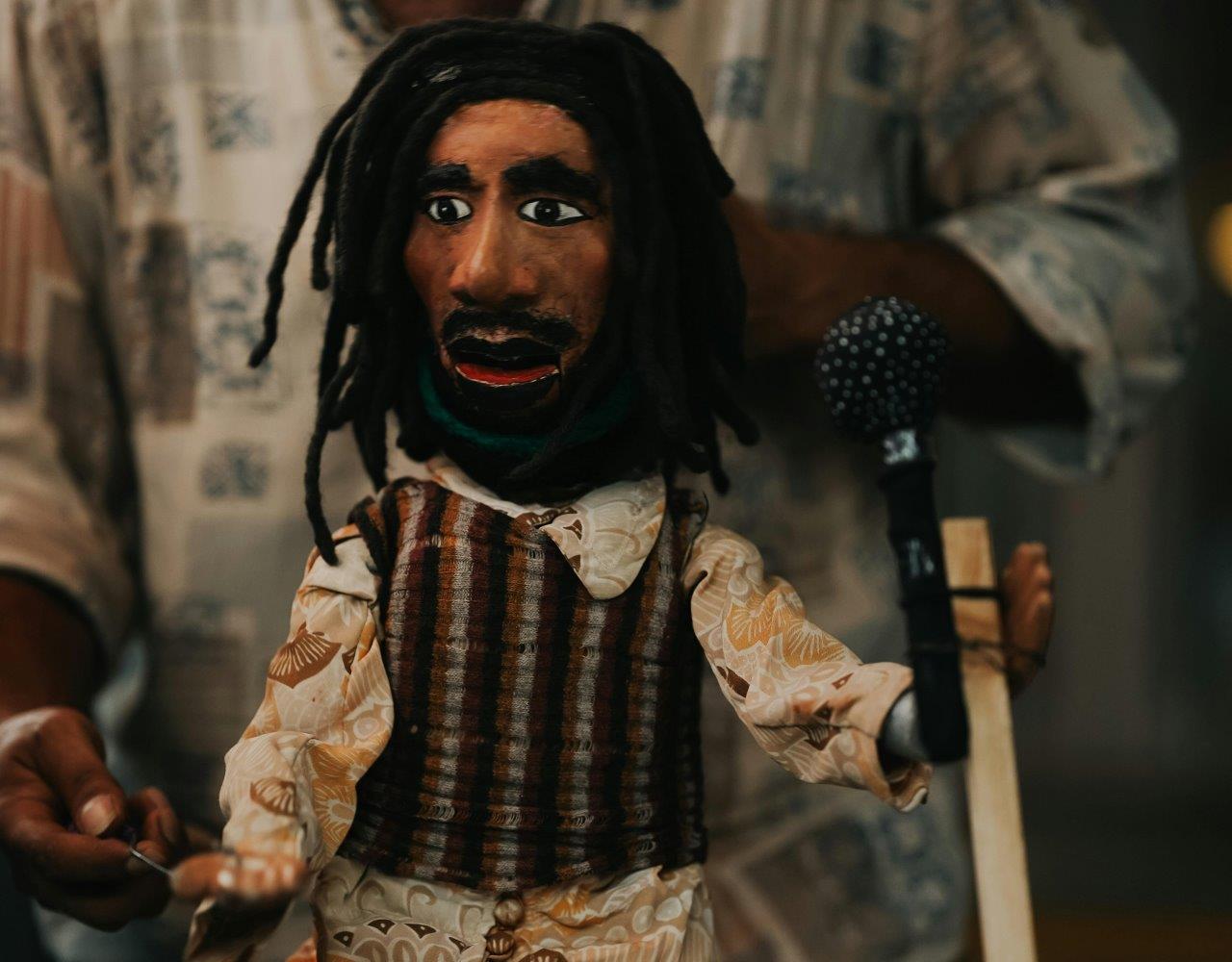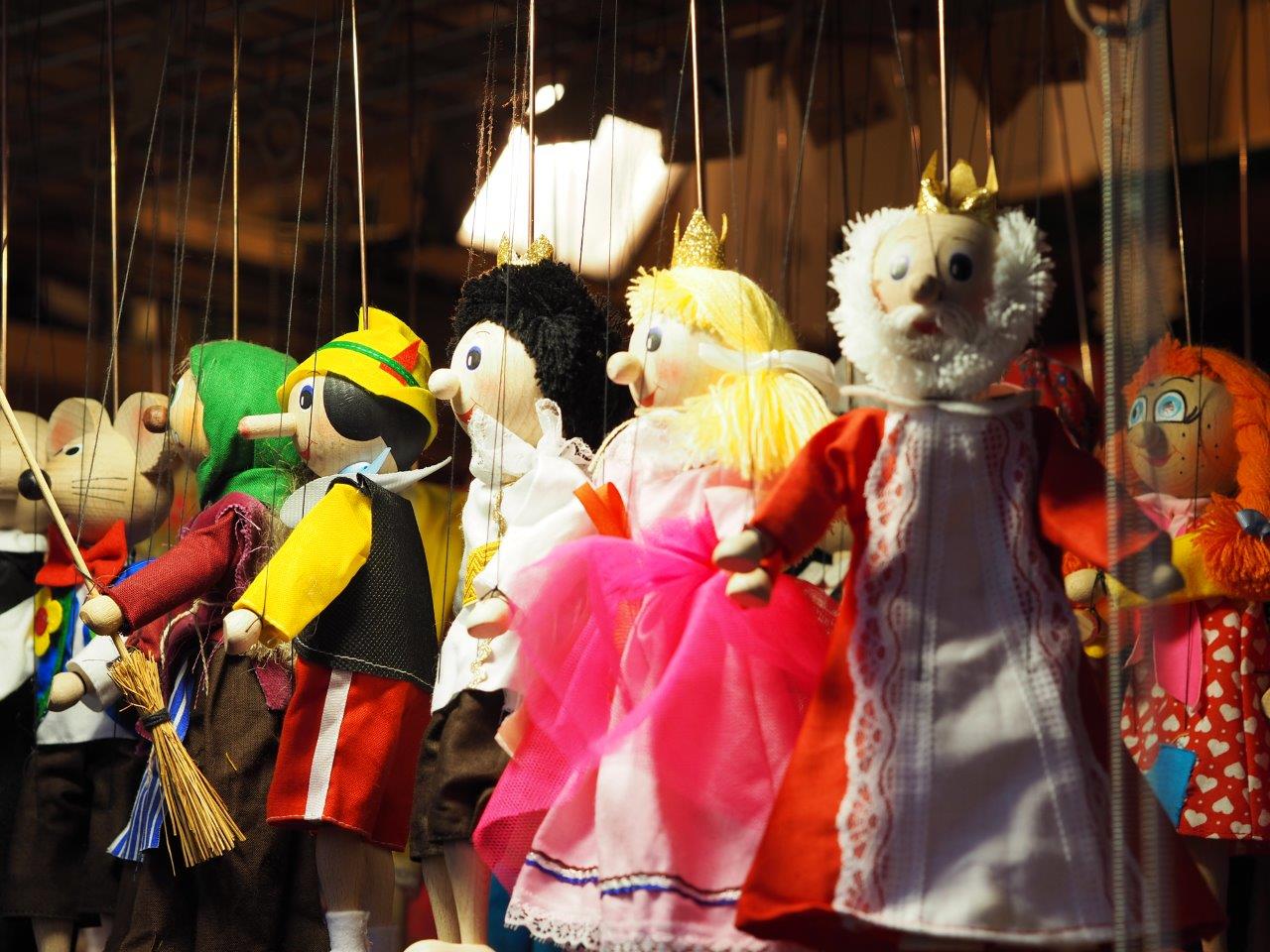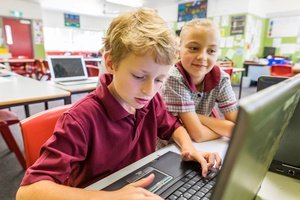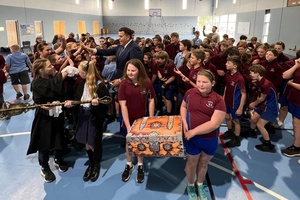Dr Olivia Karaolis, a special and inclusive education lecturer at the Sydney School of Education and Social Work at Sydney University has been researching how, used in educational and therapeutic settings, puppets could potentially provide autistic teens with a tool to communicate, express their identity and interact socially in ways that are uniquely their own.
So what is it about puppets that make them so approachable, or usable or embraceable for autistic teens?
“There’s more to it, but I do think it suits the preferences of autistic individuals being an object, being less complicated,” Karaolis tells EducationHQ.
“I think it’s simpler and it doesn’t privilege spoken language. A puppet can communicate by movement, by animation, so in using a puppet in therapeutic and educational contexts, we’re able to convey meaning through the manipulation, through how we move the puppet.”
She says puppets can occupy that space between people, that liminal space where meaning can be almost like a portal, a connection.
“And if I’m too much for one of my students, or for a child or young person, then the puppet may be an easier version of me, and one that can start to establish connection and rapport,” Karaolis explains.
“But I also get to see that person – that person reveals themself to me through the way they interact with the puppet.”
Karaolis says what’s interesting about using puppets with older children, and particularly with autistic students, is that in the creation of the puppet, there’s the opportunity for connection and for them to reveal themselves in the textures they choose, in the way they move the puppet, and in the sounds that they might make.
“And that’s moving beyond the idea of the adorable hand puppet that is very inviting for young children, but not fit for a teenager, and so that’s where I became interested in, ‘well, hang on, what’s known about puppets, and autistic teenagers? Where have they been used in schools'?
“There’s much more research in a therapeutic context, there’s much more use of puppets in health space, with nursing in hospitals, in different interventions, as part of visual arts therapy, but very little [in secondary schools].
"I think it’s because the connotation is that puppets are something childlike, they’re a toy – and yet, I think we need to expand on that and start thinking, ‘how we can use these magnificent objects to support student learning, and not just autistic teenagers, but all students?’.”
Earlier in her career, Karaolis spent more than a decade living in the United States and working with children in early years education contexts and primary schools.
Her work centred mainly in the creative arts and drama, and particularly puppetry, and she found that when working with autistic children, initial verbal interaction was often non-existent.
“I remember one little boy – I was using a puppet in circle time, when he suddenly turned around and started telling my puppet all about what he did on the weekend. This was a child who’d never uttered a word to me in the first three weeks of his schooling.
“So I became very interested in understanding this phenomenon, and why puppets actually are able to elicit conversations with all children, not just autistic children, in a range of contexts.”
While there are studies happening all over the world attempting to understand this, one in particular at Yale University has drawn a great deal of attention.
“In this study they recognised that autistic children prefer talking to a puppet than they do to a person, but they also prefer talking to and looking at a puppet other than an object,” Karaolis says.
“There’s always been a lot of interest in how autistic children’s play is very object driven, and I think it’s because the puppet is much easier to read.
“People give off so much information that can be very confusing for some folks with autism, and so being able to take away the anxiety of having to interpret so much information and make it much clearer, I think, is one of the benefits of using this particular object, as well as the fact that it changes the relationship.”
Karaolis’ study involved a review of existing literature and peer-reviewed qualitative research from the United Kingdom, the United States, Europe, India and one study from Australia.
The review included 12 qualitative studies: seven articles that discussed the use of puppets specifically with autistic students in high school settings and five studies that described the use of puppets specifically with autistic teenagers in a range of different therapeutic contexts.

“With young adults or teenagers, that’s where you start to bring in that human element, where the puppets they’re making [are] versions of themselves...” Karoalis says. PHOTO: Fatih Güney
The studies were selected if they showed evidence of a relationship between puppetry and educational or therapeutic outcomes for teenagers with autism.
She says the clearest finding from her research is that puppets give autistic teens a voice.
“So it’s a means of creating a tool for expression, and if we start thinking about universal design for learning, the puppet is the perfect example, because it allows folks to make meaning, but also to express what they know – and it gives them choice in how they do that.
“So they can move it, they can vocalise the puppet, they can create it – puppets can be made out of anything.”
The puppets can also be a valuable way for people to communicate with each other and interact, and can give distance and protection for young people who don’t feel confident speaking in front of a whole group.
“Suddenly it’s not them speaking, it’s the puppet,” Karoalis says.
“So there’s that protection of the puppet voicing their feelings and their ideas and their thoughts.”
The educator says another key finding from her study that seemed to be across settings was the change in environments.
“Learning environments become more positive, they become more relaxed, they become less stressful when there is a puppet involved,” she explains
“And I think they’re less confusing. When I talk about autistic young people, they’re not a homogenous group, everybody’s different, so there are some folks who will be far more confident speaking and others that will be much more hesitant – but I do think we see that there is an element of anxiety that exists for most autistic individuals and the puppet is a way to reduce some of that anxiety.”
For any secondary teachers keen on using puppets in their classroom, not surprisingly, Karaolis has a plethora of suggestions.
“It’s a tool that can be adapted to any curriculum,” she shares.
“I think that obviously in English and history, so for example, Shakespeare, young people use the language of Shakespeare far more confidently when they’ve got a puppet in their hand. And that’s such a rich text, it’s so evocative.
“Debating is a great example. If you have presentations where you’ve got students and young people having to get up in front of a group, can they perhaps create puppets, to speak and to voice the ideas?
Another way that they can be used in high school settings is in HPE.
“If you're starting to think about some of these more confronting topics that we want young people to be able to have conversations and discussions about, I know that roleplay is quite often used, why not use a puppet in there?
“It's going to give much more permission to talk about these types of things that young people often feel silly talking about, or embarrassed talking about, because they're not asking the question anymore.
"In geography, can we create puppets based around different spaces and places, create worlds that capture climate change?
“There’s so many ways if we just think a little bit, expand our idea of what a puppet is, and how it is actually a way of young people expressing what they know, and making and sharing meaning.”
Karolis says her study has identified a gap in our understanding of how puppets can contribute to the education of autistic teenagers and that there is a need for further research in this area.
“This research introduces new possibilities for educators, therapists, and parents to consider the unique benefits of using puppets in the lives of autistic teenagers,” she says.
“As we seek to improve support and opportunities for autistic individuals, it’s a compelling avenue worth exploring.”
Tips for secondary school teachers
- Think beyond traditional hand puppets and make and create puppets with your students;
- Make puppets from found objects, or puppets from other traditions, such as Balinese Puppets, Shadow Puppets or Bunraku;
- Use puppets in the secondary classroom to act out Romeo and Juliet, Macbeth or King Lear. Students can develop an understanding of these characters, their motivations and the themes in the plays through creating a puppet;
- Puppets can be used in debates and in whole group discussions and Socratic Circles;
- Puppets can be a tool to support design thinking – students can collaborate and respond to a problem or an issue by making a large-scale puppet or puppet performance. Think about the potential of puppets to raise awareness or communicate an important message to the learning community.
It should be noted that Dr Karaolis and the author of this story have adopted the use of identity-first language to recognise the preferences of this community that are emerging in the recent literature. The pair also acknowledge the variance in the use of appropriate disability language, with some individuals preferring person-first language and others identity-first language to describe their disability.
















